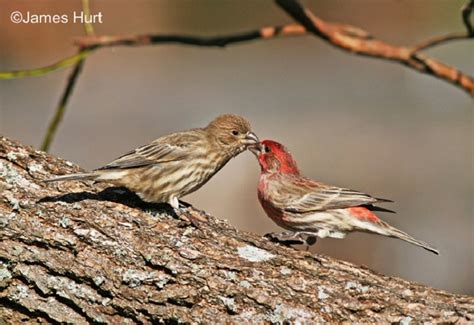House Finch Eggs

The House Finch, a common and widespread bird species in North America, is known for its vibrant plumage and melodious song. However, one of the most fascinating aspects of these birds is their reproductive biology, particularly the characteristics of their eggs. House Finch eggs are a crucial component of the species' life cycle, and understanding their features, incubation, and nesting habits can provide valuable insights into the biology and behavior of these birds.
House Finches typically lay their eggs in the spring and summer months, with the exact timing varying depending on the geographical location and climate. The female House Finch lays an average of 2-5 eggs per clutch, although the number can range from 1-6 eggs. The eggs are usually white or light blue in color, with brown or gray spots and blotches. The shape of the eggs is oval, with one end being slightly more pointed than the other. The size of the eggs can vary, but they typically measure around 0.8-1.0 inches (2.0-2.5 cm) in length and 0.6-0.7 inches (1.5-1.8 cm) in width.
Key Points
- The average clutch size of House Finch eggs is 2-5 eggs, although it can range from 1-6 eggs.
- The eggs are typically white or light blue in color, with brown or gray spots and blotches.
- The shape of the eggs is oval, with one end being slightly more pointed than the other.
- The size of the eggs can vary, but they typically measure around 0.8-1.0 inches (2.0-2.5 cm) in length and 0.6-0.7 inches (1.5-1.8 cm) in width.
- The incubation period of House Finch eggs is approximately 12-14 days, during which time the female House Finch will keep the eggs warm and safe.
Nesting and Incubation of House Finch Eggs

House Finches are known to build their nests in a variety of locations, including trees, shrubs, and even man-made structures such as buildings and bridges. The female House Finch will construct the nest using twigs, grasses, and other plant material, often lining it with softer materials like feathers and hair. The nest is typically cup-shaped and can be quite elaborate, with some nests having a diameter of up to 6 inches (15 cm) and a depth of up to 2 inches (5 cm).
Once the eggs are laid, the female House Finch will begin incubation, which typically lasts for approximately 12-14 days. During this time, the female will keep the eggs warm and safe, leaving the nest only to forage for food or to respond to potential threats. The male House Finch will often provide food for the female during incubation, bringing her seeds, fruits, and insects to sustain her while she is nesting.
Characteristics of House Finch Eggs
House Finch eggs are unique in their appearance and characteristics. The eggs are typically white or light blue in color, with brown or gray spots and blotches. The shape of the eggs is oval, with one end being slightly more pointed than the other. The size of the eggs can vary, but they typically measure around 0.8-1.0 inches (2.0-2.5 cm) in length and 0.6-0.7 inches (1.5-1.8 cm) in width. The eggs are also relatively smooth, with a slight sheen to them.
| Egg Characteristic | Description |
|---|---|
| Color | White or light blue with brown or gray spots and blotches |
| Shape | Oval, with one end being slightly more pointed than the other |
| Size | Approximately 0.8-1.0 inches (2.0-2.5 cm) in length and 0.6-0.7 inches (1.5-1.8 cm) in width |
| Texture | Relatively smooth, with a slight sheen |

Ecological Significance of House Finch Eggs

House Finch eggs play a crucial role in the species’ life cycle, and their characteristics and nesting habits have important ecological implications. The eggs are an essential component of the species’ reproductive biology, and their successful incubation and hatching are critical for the survival and success of the species. The nesting habits of House Finches also have important implications for the species’ ecological interactions, such as their relationships with predators and competitors.
Furthermore, the study of House Finch eggs and nesting habits can provide valuable insights into the species' evolutionary history and adaptations. By examining the characteristics of the eggs and the nesting behaviors of House Finches, researchers can gain a better understanding of the species' evolutionary pressures and selection forces, and how these have shaped the species' biology and behavior over time.
What is the average clutch size of House Finch eggs?
+The average clutch size of House Finch eggs is 2-5 eggs, although it can range from 1-6 eggs.
How long does the incubation period of House Finch eggs last?
+The incubation period of House Finch eggs is approximately 12-14 days.
What is the typical shape and size of House Finch eggs?
+The eggs are typically oval in shape, with one end being slightly more pointed than the other, and measure around 0.8-1.0 inches (2.0-2.5 cm) in length and 0.6-0.7 inches (1.5-1.8 cm) in width.
In conclusion, House Finch eggs are a fascinating aspect of the species’ biology and behavior, and their characteristics and nesting habits have important ecological implications. By studying the eggs and nesting habits of House Finches, researchers can gain a better understanding of the species’ reproductive strategies, evolutionary history, and ecological adaptations, and how these have shaped the species’ biology and behavior over time.



